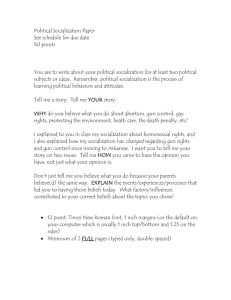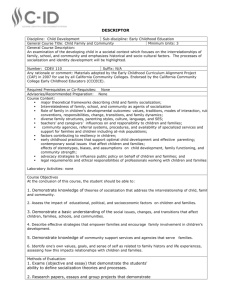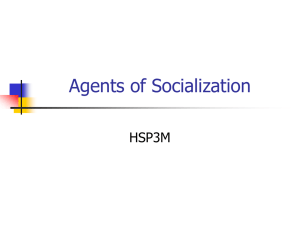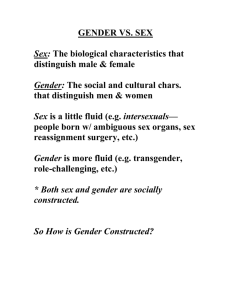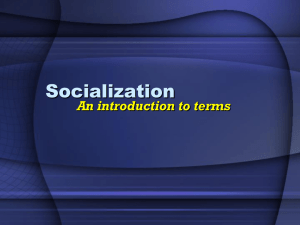sociological analysis of gender socialization of minors
advertisement
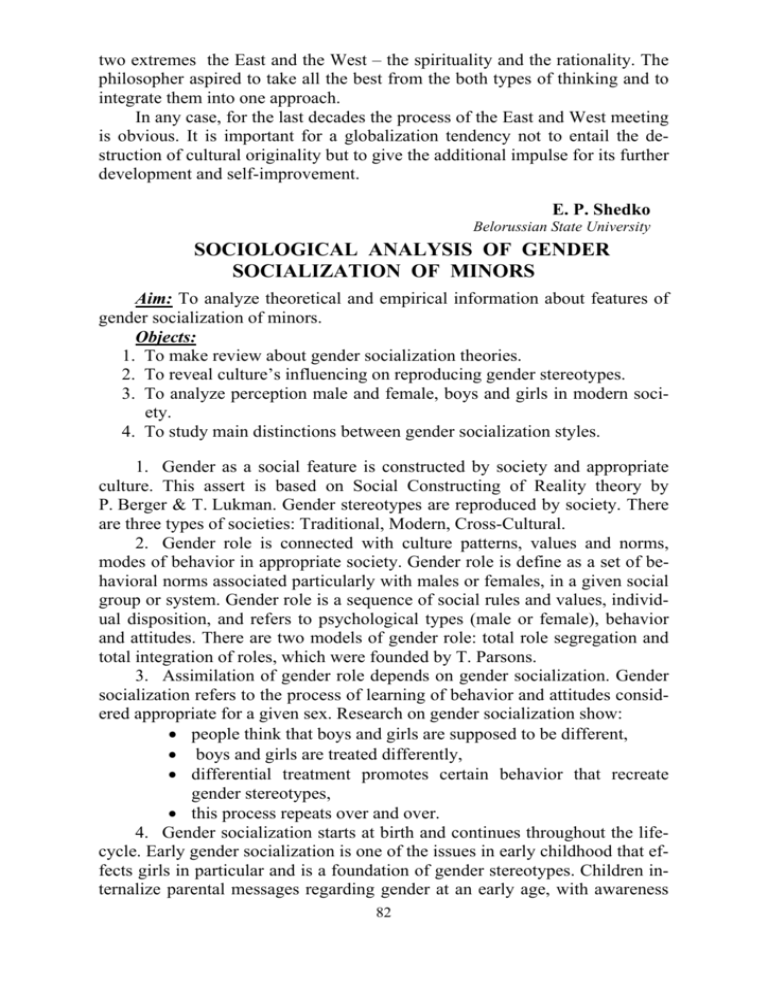
two extremes the East and the West – the spirituality and the rationality. The philosopher aspired to take all the best from the both types of thinking and to integrate them into one approach. In any case, for the last decades the process of the East and West meeting is obvious. It is important for a globalization tendency not to entail the destruction of cultural originality but to give the additional impulse for its further development and self-improvement. E. P. Shedko Belorussian State University SOCIOLOGICAL ANALYSIS OF GENDER SOCIALIZATION OF MINORS Aim: To analyze theoretical and empirical information about features of gender socialization of minors. Objects: 1. To make review about gender socialization theories. 2. To reveal culture’s influencing on reproducing gender stereotypes. 3. To analyze perception male and female, boys and girls in modern society. 4. To study main distinctions between gender socialization styles. 1. Gender as a social feature is constructed by society and appropriate culture. This assert is based on Social Constructing of Reality theory by P. Berger & T. Lukman. Gender stereotypes are reproduced by society. There are three types of societies: Traditional, Modern, Cross-Cultural. 2. Gender role is connected with culture patterns, values and norms, modes of behavior in appropriate society. Gender role is define as a set of behavioral norms associated particularly with males or females, in a given social group or system. Gender role is a sequence of social rules and values, individual disposition, and refers to psychological types (male or female), behavior and attitudes. There are two models of gender role: total role segregation and total integration of roles, which were founded by T. Parsons. 3. Assimilation of gender role depends on gender socialization. Gender socialization refers to the process of learning of behavior and attitudes considered appropriate for a given sex. Research on gender socialization show: • people think that boys and girls are supposed to be different, • boys and girls are treated differently, • differential treatment promotes certain behavior that recreate gender stereotypes, • this process repeats over and over. 4. Gender socialization starts at birth and continues throughout the lifecycle. Early gender socialization is one of the issues in early childhood that effects girls in particular and is a foundation of gender stereotypes. Children internalize parental messages regarding gender at an early age, with awareness 82 of adult sex role differences being found in two-year-old children (Cracely & Myers, 1984). Research showed that children at the age of two and half use gender stereotypes like variety of activities, objects, and occupations (Hoffman, 1986). Approximately five-seven year old child is conscious of his (her) sex and models appropriate behavior (Kon, 2004). 5. Gender socialization is realized in different ways in a family. For example, there are distinctions between gender socialization styles: modern, traditional and joint (combined). Differencing parental treatment with boys and girls is contained in: • expressing male or female traits • acquisition of specific gender toys • giving gender based assignments • training features according to one’s sex • obtain specific clothe to emphasize male or female belonging • reading specific literature 6. Gender stereotypes, roles, modes of behavior form from birth till death due to gender socialization. Parents influence on child even from his (her) birth, parental behavior defines multiple factors: • features of culture in appropriate society, • perception of gender, masculine and feminine traits, • Mass Media information about gender (or with gender context), • maintenance of appropriate gender role model, • reproducing gender stereotypes in society, • particularity of gender socialization of themselves. 83



